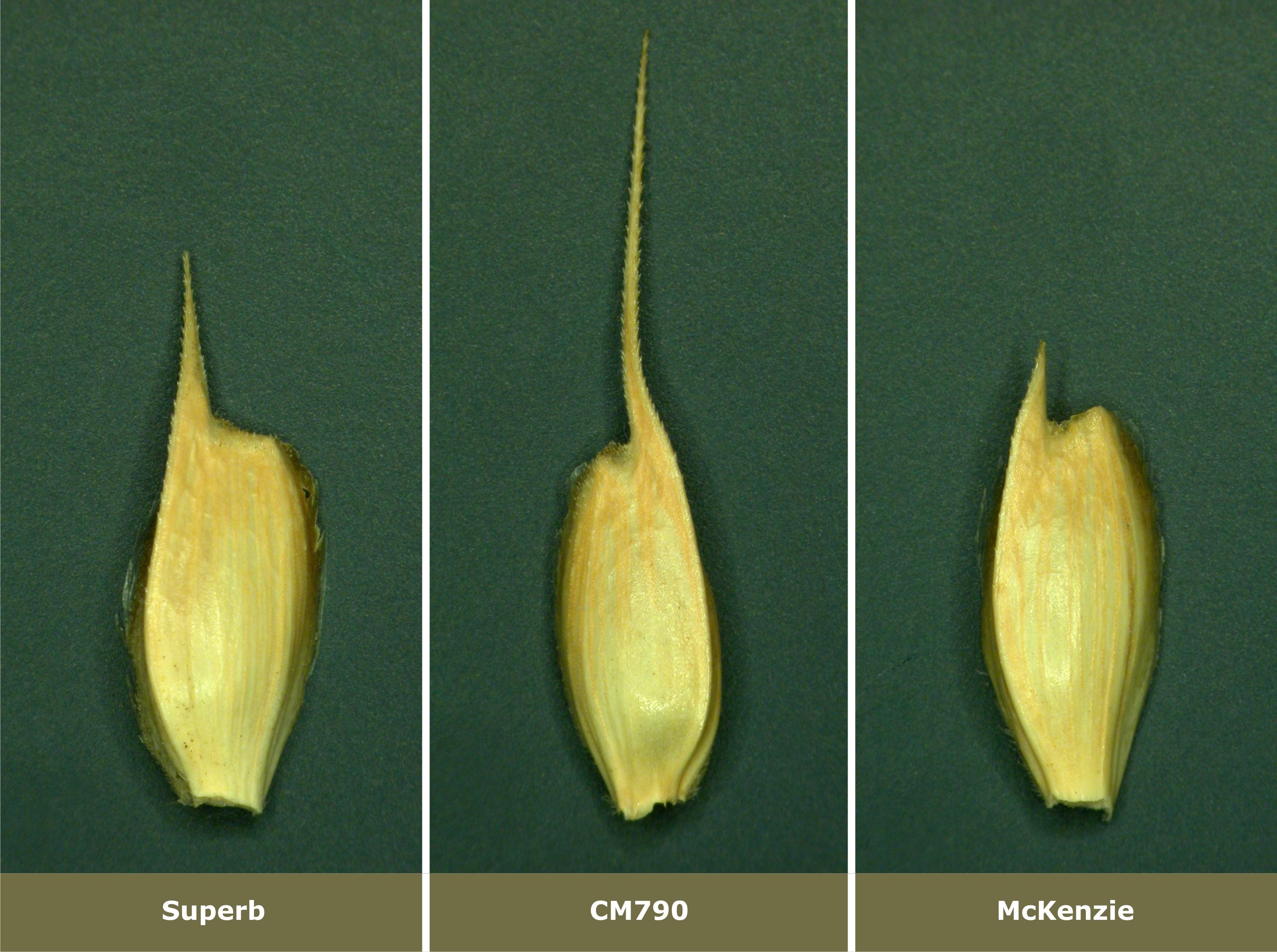Propel
| Denomination: | 'Propel' |
|---|---|
| Previously Proposed Denomination: | 'CM790' |
| Botanical Name: | Triticum aestivum |
| Applicant/Holder: |
Agriculture & Agri-Food Canada, Winnipeg Cereal Research Centre 195 Dafoe Road Winnipeg, Manitoba R3T 2M9 Canada |
| Breeder: |
Stephen Fox, Agriculture & Agri-Food Canada, Winnipeg, Manitoba |
| Agent in Canada: |
Agriculture & Agri-Food Canada Office of Intellectual Property and Commercialization c/o Shannon Whyte 107 Science Place Saskatoon, Saskatchewan S7N 0X2 Canada Tel: (204) 999-9887 |
| Application Date: | 2007-06-20 |
| Application Number: | 07-5933 |
| Grant of Rights Date: | 2009-05-14 |
| Certificate Number: | 3481 |
| Date rights surrendered: | 2015-05-13 |
Variety Description
Varieties used for comparison: 'Superb' and 'McKenzie'
Summary: 'Propel' differs from the reference varieties, 'Superb' and 'McKenzie', mainly in flag leaf length, anthocyanin colouration of the flag leaf auricles, plant height, anthocyanin colouration of the straw at maturity, lower glume width, lower glume shoulder shape and width and beak length. The flag leaf auricles of 'Propel' have no anthocyanin colouration whereas it is weak to medium in 'Superb'. At maturity, the straw of 'Propel' has no anthocyanin colouration whereas it is weak in 'McKenzie'. The lower glumes of 'Propel' are narrow to medium in width whereas they are medium to wide in 'Superb'. The lower glume shoulder of 'Propel' is sloping whereas it is slightly sloping to straight in 'Superb' and straight to slightly elevated in 'McKenzie'. The lower glume shoulder of 'Propel' is very narrow whereas it is narrow to medium in width in both 'Superb' and 'McKenzie'. The lower glume beak length of 'Propel' is long whereas it is medium to long in 'Superb' and short in 'McKenzie'.
Description:
PLANT: spring type, semi-erect growth habit
SEEDLING: weak to medium pubescence on lower leaf sheaths, weak pubescence on lower leaf blades
FLAG LEAF: high to very high frequency of plants with recurved/drooping flag leaves, glabrous blades and sheaths, absent or very weak intensity of anthocyanin colouration of auricles, weak to medium glaucosity of sheath
CULM NECK: medium glaucosity, weak to medium curvature
STRAW: very thin, no anthocyanin colouration at maturity
SPIKE: parallel-sided shape, medium density, inclined at maturity, medium to strong glaucosity, white at maturity, white awns present, awns medium to long in relation to length of spike, medium to slightly spreading awn attitude, sparse hairiness of convex surface of apical segment
LOWER GLUME: medium in width, medium length, very weak pubescence, slightly sloping narrow shoulder, slightly curved long to very long beak, sparse internal hairs
LEMMA: straight to slightly curved beak
KERNEL: hard red type, medium red colour, small to medium size kernel, short to midlong, mid-wide, ovate shape, rounded cheek shape, midlong to long brush hairs, midsize to large germ, oval shape of germ, narrow to mid-wide and deep crease
AGRONOMIC CHARACTERISTICS: good resistance to shattering, fair bread-making quality, moderately susceptible to powdery mildew (Erysiphe graminis f. sp. tritici), moderately resistant to Fusarium head blight (Fusarium graminearum, Fusarium species), moderately resistant to moderately susceptible to Common bunt (Tilletia caries, Tilletia foetida), moderately susceptible to Loose smut (Ustilago tritici), moderately resistant to moderately susceptible to Leaf rust (Puccinia triticina) and resistant to Stem rust (Puccinia graminis f.s.p. tritici).
Origin & Breeding History: 'Propel' (experimental designation 96B84-AU1C) derives from the cross SD8070*2/AC Domain made at the Agriculture & Agri-Food Canada, Cereal Research Centre, Winnipeg, Manitoba in 1996. The F2 progeny of 96B84 were grown as spaced plants at Glenlea, Manitoba in 1997, and individual spikes were selected and grown as F3 hills in a winter nursery at Cereal Research Centre Palmerston, New Zealand. The F4 generation was grown as short rows at Glenlea in 1998 where selection occurred for agronomic traits, and leaf and stem rust resistance. Yield testing began at the F6 generation. The F6:8 was tested in 2000 for yield as well as evaluation for resistance to leaf rust, stem rust and Fusarium head blight. In 2001, it was tested in multi location yield trials and then provided to C&M Seeds in 2002 which named it CM790 and tested it in their preliminary yield trials that year.
Tests & Trials: The tests and trials for 'Propel' were conducted in Glenlea, Manitoba during the summer of 2006 and in Portage la Prairie, Manitoba during the summer of 2007. A 4 replicate randomized complete block design experiment was planted using 3.25 square metre harvested area plots, seeded at a rate of 269 seeds/square metre. Measured characteristics were based on a mean of two years, with 20 measurements taken per year.
Comparison tables for 'Propel' with reference varieties 'Superb' and 'McKenzie'
Flag leaf length (cm)
| 'Propel' | 'Superb' | 'McKenzie' | |
|---|---|---|---|
| mean | 21 | 16 | 14 |
| std. deviation | 4 | 3 | 2 |
Plant height (cm)
| 'Propel' | 'Superb' | 'McKenzie' | |
|---|---|---|---|
| mean | 97 | 88 | 99 |
| std. deviation | 11 | 8 | 16 |
Click on image for larger view

Wheat: 'Propel' (centre) with reference varieties 'Superb' (left) and 'McKenzie' (right)
- Date modified: